NOBSCOTDENTAL CARE
REZA M. MADANI, DMD, FAGD
Dental Implants
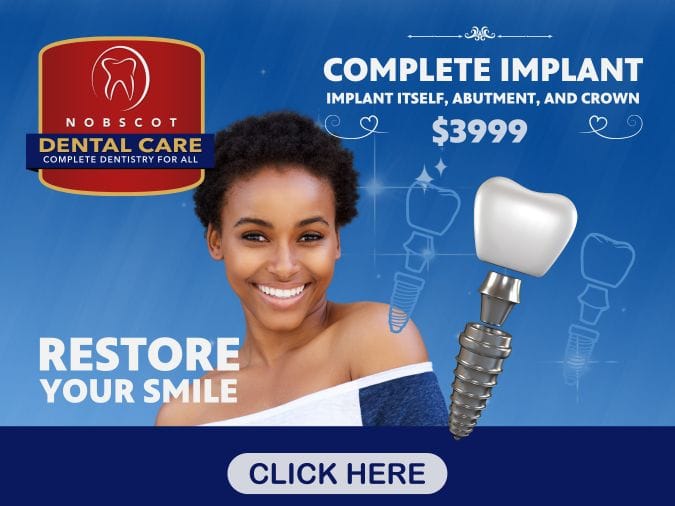 Dr. Reza Madani's sensible approach to restore and replace teeth with dental implants offers excellent function and the finest esthetics. Nobscot Dental Care is the best place to get dental implants with an experienced team strategy. Call now to book a dental implant consultation.
Dr. Reza Madani's sensible approach to restore and replace teeth with dental implants offers excellent function and the finest esthetics. Nobscot Dental Care is the best place to get dental implants with an experienced team strategy. Call now to book a dental implant consultation.
What Are Dental Implants?
An implant is a titanium "root" that a surgeon can fix into the jawbone. Once integrated with your bone, the implant can be used to support a crown, a bridge, or secure a complete denture. In addition, dental implants can replace partial plates and dentures. Implants have been used successfully for over thirty years, have a high success rate and function, and feel like natural teeth. As a result, dental implants are now the standard of care for replacing missing teeth. Dental implant treatment represents a slightly more significant investment than conventional treatment; however, the benefits of implant therapy for most patients outweigh the minor additional cost involved.

- Dental implants eliminate the need to "cut down" the neighboring teeth to attach a bridge.
- The artificial tooth root exercises the jawbone preventing bone loss.
- Dental Implants look like and function like natural teeth. Eat the foods you prefer while enjoying a better diet and improved health.
- Dental implants do not stress surrounding teeth for support.
- Can replace partial plates and may be used to anchor wobbly dentures. No more embarrassment and frustration speaking because of failing bridgework or slipping dentures.
- Easy cleaning! Dental implants are maintained using standard dental hygiene like flossing and brushing.
There are two phases to implant dentistry.
Phase 1: Using precision surgical techniques, Dr. Madani incisions the gum tissues and places dental implants into the jawbone.
More specifically, Dr. Madani opens the gum tissue and taps the jaw bone. Next, Dr. Madani screws the dental implant into place. The gum tissues are then closed, and the healing phase begins. Healing may take between 4 to 6 months, ensuring a solid base.
Phase 2: Dr. Madani secures an abutment to the top of the dental implant, and finally, a new tooth crown is attached to the implant abutment. Implants can replace a single tooth, several teeth, or dentures.
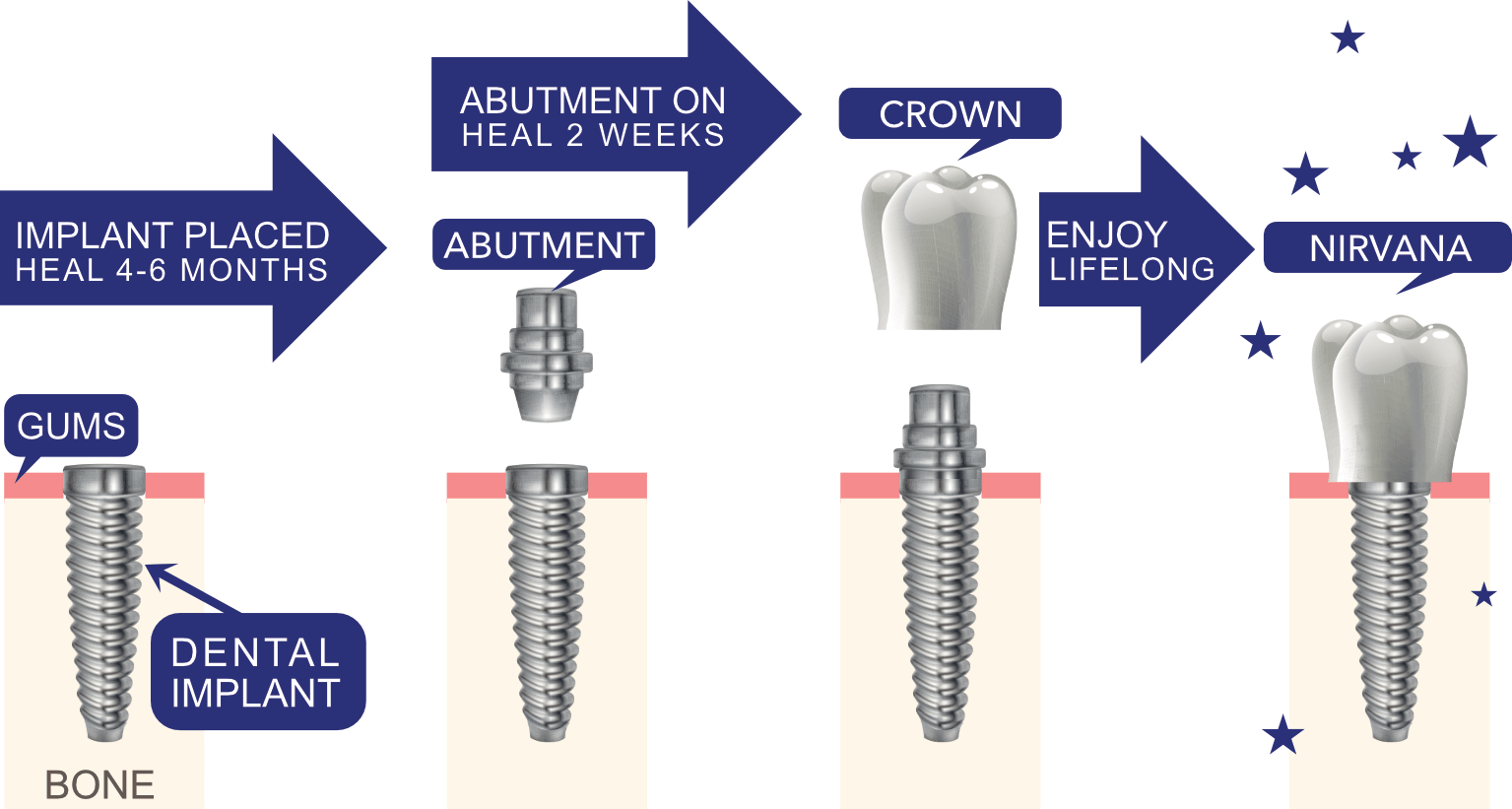
It is possible to remove the diseased and loose teeth and replace them with dental implants simultaneously for many patients. In almost all cases, simultaneous bone grafting is feasible. This method of treatment reduces the number of surgical visits. It also speeds up the entire process enabling the implants to support caps or crowns quickly.

Do not disturb the wound. Avoid rinsing, spitting, or touching the wound on the day of surgery. There will be a metal healing abutment protruding through the gingival (gum) tissue.
BLEEDING. Some bleeding or redness in the saliva is normal for 24 hours. Patients can control excessive bleeding by biting on a gauze pad placed directly on the bleeding area for 30 minutes. If bleeding continues, please call the office for further instructions.
SWELLING. Swelling around the mouth, cheeks, eyes, and sides of the face is not uncommon as it is the body's normal process of repairing itself. Swelling does not always appear immediately. It may take 12 to 24 hours before swelling becomes apparent. Swelling may not reach its maximum until 2-3 days post-surgery. Patients can minimize swelling with the immediate use of ice packs post-surgery. Patients should apply one or two baggies filled with ice or ice packs to the face over the surgical site. The ice packs should be left on continuously while you are awake. After 36 hours, ice has no further effect. If swelling or jaw stiffness has persisted for several days, call the office.
DIET. Drink plenty of fluids. Avoid hot liquids or hot food. Patients should consume only soft food and beverages on the day of surgery. Return to a regular diet as soon as possible unless otherwise directed.
PAIN MEDICATION. It would be best to begin taking pain medication when the patient feels the local anesthetic wearing off. For moderate pain, The patient may take 1 or 2 Tylenol or Extra Strength Tylenol every 3-4 hours. Ibuprofen (Advil or Motrin) may be taken instead of Tylenol. Ibuprofen, bought over the counter, in 200 mg tablets: 2-3 tablets taken every 3-4 hours as needed for pain. For severe pain, take the prescribed medication as directed. Be sure to take the prescribed antibiotics as directed to help prevent infection. Do not take any of the above medication if allergic or have been instructed by Nobscot Dental Care not to take it.
HOME HYGIENE CARE. On the night of surgery, use the prescribed Peridex Oral Rinse before bed. The day after surgery, the Peridex should be used twice daily, after breakfast and before bed. Be sure to rinse for at least 30 seconds, then spit it out. Warm salt water rinses (teaspoon of salt in a cup of warm water) should be used at least 4-5 times a day, especially after meals. Brushing the teeth and the healing abutments with a soft brush is recommended. Brush the surgical areas gently. Good oral hygiene is essential to good healing.
PHYSICAL ACTIVITY. Keep physical activities to a minimum immediately following surgery. Physical activity could cause throbbing or bleeding of the surgical implant area.
WEARING DENTURES. You will always have teeth during your recovery period. Temporary partial dentures or full denture arches should NOT be used immediately after surgery and for at least ten days afterward.
Receiving an implant requires a healthy mouth and a jawbone adequate to support it. If the jawbone isn't deep enough or is too soft, the patient may need bone grafting so that dental implant surgery is possible. With bone grafting, the patient would expect a four to six months healing before proceeding to the next step.
Many artificial biocompatible bone substitutes are available; however, the best material for a bone graft is the patient's bone, which will most likely come from the chin, the back part of the lower jaw, or the hip bone. There are also synthetic materials that Dr. Madani can use for bone grafting. Again, however, most bone grafts use the patient's bone, possibly in combination with other materials.
Dr. Madani will drill holes in the existing bone, and then he places the grafting bone into the holes. Next, Dr. Madani anchors the removed block of bone with titanium screws. Dr. Madani will then place a mixture of the patient's bone marrow and some other bone-graft material around the edges of the bone block. Finally, Dr. Madani will place a membrane over the area, and the incision is closed.
It is sometimes possible to perform a bone graft during dental implant placement, but if that is not feasible, a healing period of six to twelve months will be necessary before the next step.
Do you have a tooth that is missing? Jawbone loss is prevented through replacement. Missing teeth can cause problems with your bite, producing a rearranged mouth, which can age the face and cause pain. Dental implants can be used to replace a missing tooth. Dental implants are tooth roots that are implanted into the jawbone. An abutment and crown are attached once the bone has fused with the implant. This tooth replacement process appears and functions like natural teeth.
In cases where multiple teeth are missing or have been extracted, implants can be used to restore your smile. The implants are placed into the jawbone and given time to heal. After the bone has healed around the implants, an abutment is attached to the implant, allowing for a crown or bridge to be connected. The implants will look and function just like natural teeth.
Ask Dr. Madani if dental implants are right for you.
This prosthesis is used in special situations for patients who have enough bone in the anterior regions of the lower or upper jaws, but limited amount of bone in the posterior regions and are not candidates for extensive bone grafting.
A mini dental implant (MDI) is an implant used to provide better denture stability in patients that cannot handle standard implant surgery, do not have enough bone to support a standard implant or are going from one prosthetic system to another due to continuing therapy.
The top of an MDI is shaped like a ball that allows a rubber o-ring to snap in over the ball when the denture is placed onto it. These types of implants can usually be placed in one or two office visits because there is no waiting on the jawbone to heal. In most situations the patient can walk out with their dentures the same day they receive their implants.
Before making the decision in going the implant route, ask yourself if there is another option. We offer many different implant alternatives.
The different alternative options to implants that we provide are:
- Tooth Supported Bridge
- Removable Partial Denture
- No Treatment
Getting an implant can be a life changing decision. If you have more questions please follow the link to the Implant FAQs section or give us a call at (508) 877-0800 to schedule a consultation.
Dental Implants Made Simple: What to Expect
-
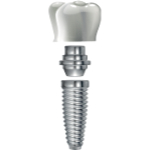
Treatment Timeline
Request a Dental Implant Consultation or Second Opinion.
Waiting will only make treatment more difficult and expensive.
Call Today. -

Meet Dr. Madani
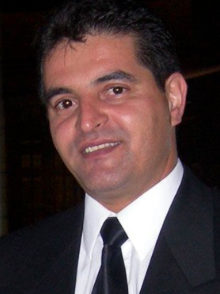 The patient will meet Dr. Madani, take x-rays and get a thorough evaluation of teeth, gums, and health to decide if the patient is a candidate for implant therapy. If so, the doctor will discuss treatment options and formulate a treatment plan. The plan will include appointments, anesthesia or sedation options, recovery period, aftercare guidance, and a quote.
The patient will meet Dr. Madani, take x-rays and get a thorough evaluation of teeth, gums, and health to decide if the patient is a candidate for implant therapy. If so, the doctor will discuss treatment options and formulate a treatment plan. The plan will include appointments, anesthesia or sedation options, recovery period, aftercare guidance, and a quote. -

Is Bone Grafting Required?
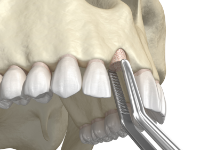 Receiving an implant requires a healthy mouth and a jawbone adequate to support it. If the jawbone isn't deep enough or is too soft, the patient may need bone grafting so that dental implant surgery is possible. With bone grafting, the patient would expect a four to six months healing before proceeding to the next step.
Receiving an implant requires a healthy mouth and a jawbone adequate to support it. If the jawbone isn't deep enough or is too soft, the patient may need bone grafting so that dental implant surgery is possible. With bone grafting, the patient would expect a four to six months healing before proceeding to the next step. -

Placing the Implant
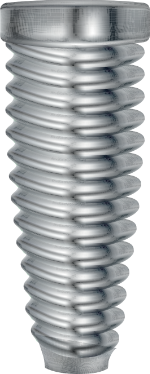 Once the bone grafting heals, or if the patient did not need a graft, the next step is to mold the mouth and use the mold to prepare the implants that the surgeon will place. Once the surgeon places the implant in the jawbone, osseointegration begins. During this process, the jawbone grows into and fuses with the surface of the dental implant. Complete osseointegration may take two to six months. If there is discomfort after surgery, it will go away in 24 to 48 hours.
Once the bone grafting heals, or if the patient did not need a graft, the next step is to mold the mouth and use the mold to prepare the implants that the surgeon will place. Once the surgeon places the implant in the jawbone, osseointegration begins. During this process, the jawbone grows into and fuses with the surface of the dental implant. Complete osseointegration may take two to six months. If there is discomfort after surgery, it will go away in 24 to 48 hours. -

Placing the Abutment
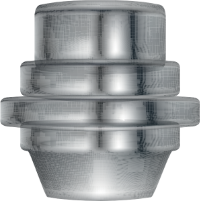 When the osseointegration is complete, minor surgery is required to install the abutment - the part that will join the implant to the crown. The surgeon will typically perform this surgery with local anesthesia.
When the osseointegration is complete, minor surgery is required to install the abutment - the part that will join the implant to the crown. The surgeon will typically perform this surgery with local anesthesia. - The oral surgeon reopens the gum to expose the dental implant
- The surgeon connects the abutment, or the temporary healing abutment to the implant
- The gum tissue is then closed around the abutment
After the abutment surgery, the gums need healing for about two weeks. Once healed, the artificial tooth can be attached.
-

Final Step: Installing the Artificial Teeth
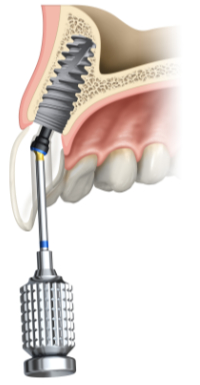
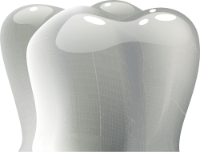 After gums have healed, Dr. Madani makes a dental impression and uses it to shape the crown. The permanent abutment is attached and perpared for the last step.
After gums have healed, Dr. Madani makes a dental impression and uses it to shape the crown. The permanent abutment is attached and perpared for the last step. Finally, Dr. Madani will anchor the new realistic-looking artificial tooth or teeth to the implant.
-

Enjoy, Lifelong!
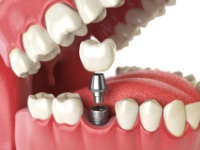 Dental implants are maintained the same as natural teeth. Daily brushing and flossing and regularly schedule hygiene appointments as directed by
Dental implants are maintained the same as natural teeth. Daily brushing and flossing and regularly schedule hygiene appointments as directed by Dr. Madani .With proper care implants can last a lifetime.
-

Request a Dental Implant Consultation or Second Opinion.
Waiting will only make treatment more difficult and expensive.
Call Today.
Our office provides smile makeovers to achieve the beautiful, natural look you seek. We can reshape your natural teeth to make them straighter or more youthful in appeal. Our offices is easily accessible and makes it convenient to those living in Framingham to get the care they deserve.
Make an Appointment
Call Us Today
(508) 877-0800
